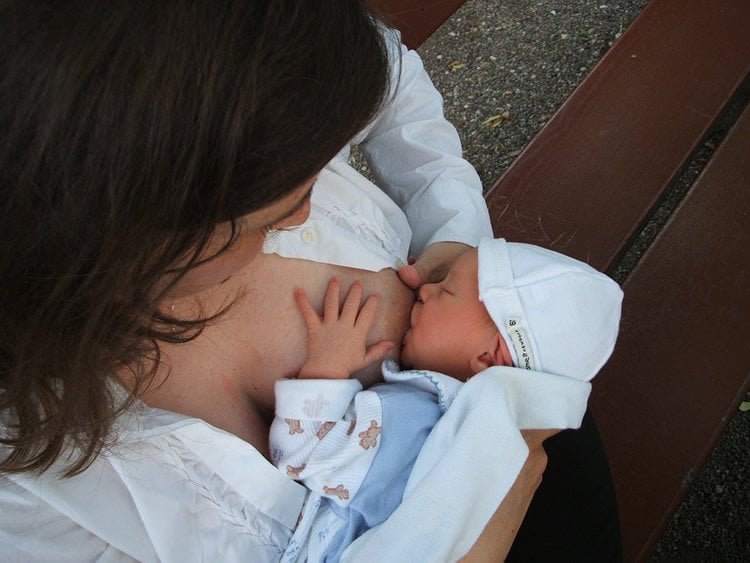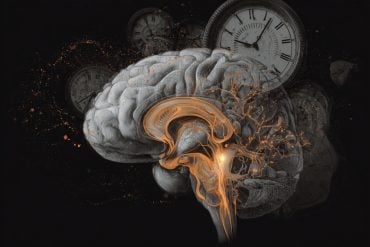Summary: Prolactin, a hormone that stimulates a mother’s milk production, appears to be a vital component in maternal nurturing behavior, a new study reports.
Source: University of Otago.
The same hormone that stimulates milk production for lactation, also acts in the brain to help establish the nurturing link between mother and baby, University of Otago researchers have revealed for the first time.
The researchers found that signalling by the hormone prolactin to its receptors in a specific brain region is essential for mothers to show vitally important maternal nurturing behaviour towards their young. This finding raises the question, is this brain circuitry the “feel good” factor to encourage breast feeding?
Prolactin is best known for its role in enabling milk production in mammals.
The research team at the University’s Centre for Neuroendocrinology undertook targeted deletion of prolactin receptors in the preoptic area of the brains of adult female mice.
Study co-author Dr Rosie Brown says the team observed that these mice without prolactin receptors were able to get pregnant and give birth normally, but abandoned their litters around 24 hours after birth.
The research is newly published in the prestigious international journal PNAS.

“Our findings establish a critical role for prolactin for more than simply milk production. This work is the first to show this hormone is a literal life saver in that it establishes and maintains the normal parental care that ensures offspring survival.”
Disruptions in the ability of prolactin to communicate in the brain could lead to problems for mothers establishing a bond with their baby. This may in part explain issues with some animal species abandoning their young, she says.
Funding: This work was supported by Health Research Council of New Zealand Grant and a Marsden Grant from the Royal Society of New Zealand.
Source: Rosie Brown – University of Otago
Image Source: NeuroscienceNews.com image is in the public domain.
Original Research: Abstract for “Prolactin action in the medial preoptic area is necessary for postpartum maternal nursing behavior” by Rosemary S. E. Brown, Mari Aoki, Sharon R. Ladyman, Hollian R. Phillipps, Amanda Wyatt, Ulrich Boehm, and David R. Grattan in PNAS. Published online Aeptember 18 2017 doi:10.1073/pnas.1708025114
[cbtabs][cbtab title=”MLA”]University of Otago “Lactation Hormone Also Helps a Mother’s Brain.” NeuroscienceNews. NeuroscienceNews, 26 September 2017.
<https://neurosciencenews.com/lactation-maternal-brain-7581/>.[/cbtab][cbtab title=”APA”]University of Otago (2017, September 26). Lactation Hormone Also Helps a Mother’s Brain. NeuroscienceNews. Retrieved September 26, 2017 from https://neurosciencenews.com/lactation-maternal-brain-7581/[/cbtab][cbtab title=”Chicago”]University of Otago “Lactation Hormone Also Helps a Mother’s Brain.” https://neurosciencenews.com/lactation-maternal-brain-7581/ (accessed September 26, 2017).[/cbtab][/cbtabs]
Abstract
Prolactin action in the medial preoptic area is necessary for postpartum maternal nursing behavior
Pregnancy hormones, such as prolactin, sensitize neural circuits controlling parental interactions to induce timely activation of maternal behaviors immediately after parturition. While the medial preoptic area (MPOA) is known to be critical for maternal behavior, the specific role of prolactin in this brain region has remained elusive. Here, we evaluated the role of prolactin action in the MPOA using complementary genetic strategies in mice. We characterized prolactin-responsive neurons within the MPOA at different hormonal stages and delineated their projections in the brain. We found that MPOA neurons expressing prolactin receptors (Prlr) form the nexus of a complex prolactin-responsive neural circuit, indicating that changing prolactin levels can act at multiple sites and thus, impinge on the overall activity of a distributed network of neurons. Conditional KO of Prlr from neuronal subpopulations expressing the neurotransmitters GABA or glutamate within this circuit markedly reduced the capacity for prolactin action both in the MPOA and throughout the network. Each of these manipulations, however, produced only subtle impacts on maternal care, suggesting that this distributed circuit is robust with respect to alterations in prolactin signaling. In contrast, acute deletion of Prlr in all MPOA neurons of adult female mice resulted in profound deficits in maternal care soon after birth. All mothers abandoned their pups, showing that prolactin action on MPOA neurons is necessary for the normal expression of postpartum maternal behavior in mice. Our data establish a critical role for prolactin-induced behavioral responses in the maternal brain, ensuring survival of mammalian offspring.
“Prolactin action in the medial preoptic area is necessary for postpartum maternal nursing behavior” by Rosemary S. E. Brown, Mari Aoki, Sharon R. Ladyman, Hollian R. Phillipps, Amanda Wyatt, Ulrich Boehm, and David R. Grattan in PNAS. Published online Aeptember 18 2017 doi:10.1073/pnas.1708025114






